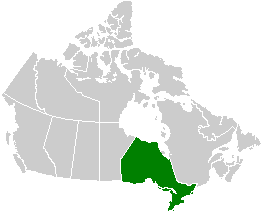In the broadest sense, cultural resource management (CRM) is the vocation and practice of managing cultural resources, such as the arts and heritage. It incorporates Cultural Heritage Management which is concerned with traditional and historic culture. It also delves into the material culture of archaeology. Cultural resource management encompasses current culture, including progressive and innovative culture, such as urban culture, rather than simply preserving and presenting traditional forms of culture.

The National Historic Preservation Act is legislation intended to preserve historic and archaeological sites in the United States of America. The act created the National Register of Historic Places, the list of National Historic Landmarks, and the State Historic Preservation Offices.

The Battle of Loon Lake concluded the North-West Rebellion on June 3, 1885 and was the last battle fought on Canadian soil. It was fought in what was then the District of Saskatchewan of the Northwest Territories, at what is now known as Steele Narrows, in Saskatchewan's Makwa Lake Provincial Park.

The Ontario Heritage Trust is a non-profit agency of the Ontario Ministry of Tourism and Culture. It is responsible for protecting, preserving and promoting the built, natural and cultural heritage of Canada's most populous province, Ontario.
Boyd Nicholas David Wettlaufer, was a Canadian archaeologist, considered as 'the Father of Saskatchewan Archaeology.' His groundbreaking archaeological work in western Canada is considered the foundation of our knowledge of the Northern Plains First Nations people.
The Saskatchewan Archaeological Society is a society of amateur and professional archaeologists who encourage the preservation of archaeological artifacts and sites, publish, educate and assist the public in the interest of archaeological activities. As well, the Saskatchewan Archaeological Society assists in the formation of local branches of archaeological communities such as the Regina Archaeological Society. Many of the archaeology sites of Saskatchewan are of aboriginal ancestry and include rock paintings, habitation sites, medicine wheels, as well as kill and processing sites. Archaeology focuses on the anthropological study of human history and lifestyle using artifacts.
There are numerous heritages and cultural attractions in the province of Saskatchewan. Museums, dinosaur digs, aboriginal cultural and heritage sites, art galleries, professional sport venues, spas, handcraft, antique and tea shops, agricultural tours, theatre and archaeological sites comprise over 600 varied Saskatchewan institutions.
American Indian Rock Art in Minnesota MPS is a Multiple Property Submission (MPS) of the eligibility of many rock art properties for listing on the National Register of Historic Places. The listing is to protect and preserve Native American petroglyphs, pictographs and petroform rock art sites in the present day U.S. state of Minnesota.

British Columbia Archaeological Assessment Process: British Columbia has set forth a directive process in order to regulate the development of land by private and government identities, this is known as the Heritage Act. British Columbia holds cultural sites throughout its geography and is home to many famous aboriginal archaeological sites, such as the Kwäday Dän Ts'ìnchi, which was an archaeological site containing a frozen person in British Columbia's Tatshenshini-Alsek Park. British Columbia archaeological sites are held in accordance with both the Heritage Act and the federal Environmental Assessment Act, which regulates the areas where developers can utilize and where the provincial government can build infrastructure. This process has not been put into place to discourage development, but has been put into place to regulate historic cultural sites in order to retain historic areas, sites, ecofacts, and artefacts.
Manitoba archaeology regulations control archaeology-related activities in the province of Manitoba.

Archaeology and conservation of cultural resources in Ontario fall under the Ministry of Tourism, Culture and Sport. The Province of Ontario has created Acts to insure the protection archaeological and cultural resources. Acts such as the Ontario Heritage Act and Environmental Assessment Act provide the major legal documents that protect heritage and cultural resources. Additionally, Acts such as the Planning Act, the Aggregate Resource Act and the Ontario Cemeteries Act are also implemented when specific triggers occur during archaeological assessments.

The Great Marpole Midden, is an ancient Musqueam village and burial site located in the Marpole neighbourhood of Vancouver, British Columbia.

Cumberland House Provincial Park is a located in Cumberland House, Saskatchewan, Canada, on the site of the first inland Hudson's Bay Company post in Saskatchewan and the oldest village in the province. A powder magazine shed built in 1886 and artifacts from the HBC Northcote steamship are the remaining historic elements on the site.

The Heritage Property Act )the Act) is a provincial statute which allows for the identification, protection and rehabilitation of cultural heritage properties in the province of Nova Scotia, Canada.

The Heritage Conservation Act is a provincial statute which allows for the preservation of cultural heritage properties and areas in the province of New Brunswick, Canada.

The Heritage Property Act is a provincial statute which allows for the preservation of cultural heritage properties, archaeological sites and palaeontological sites in the province of Saskatchewan, Canada.










